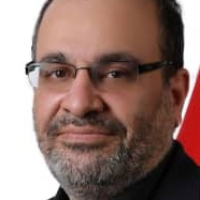Distribution of Cancer Incidence in Districts and Neighbourhoods of a Number of Tehran Districts in 1386
The global burden of cancer continues to increase largely because of the aging and growth of the world population alongside an increasing adoption of cancer-causing behaviors, particularly smoking and various environmental factors. A variety of cancers data in special geographic areas can help define medical programs for treatment and screening of high-risk groups. Since cancer types has not been reported within districts and neighbourhoods of Tehran city so far, this study could be considered as the first in this respect, which defines cancer epidemiology in the catchment area, and on the other hand, paves the provision of equitable services patient who need these facilities.
This is the cross sectional study that shows cancer distribution patern. Incident cases from Tehran residents covered by the Iran University of Medical Sciences were obtained, which included almost 55% of the total cancer incidence in Tehran in 2007. Districts covered by the university were located in west and southwest of Tehran including districts 2,5,6,9,18,21, and 22 cases of other districts refered to Iran university that identified incidence cancer but results must interpreted with caution since those resident districts have not been covered population data were obtained from theprevious census in 2006. Age and sex standard rate were calculated based on Iranian standard population. Cancers distribution maps were developed using available adresses, indicating districts and neighbourhoods in GIS. Common cancers diffrence within covered districts was tested by Fisher exact test.
Cancer incidence in specified districts of Tehran was 72.822 in 100000 population, where district 6 had the highest incidence (ASR=90.552) followed by district 2 (ASR=71.503) and the least incidence was in district 18 (ASR=34.991). This diffrence was significant within districts by Fisher exact test. The highest ASRs in women was 87.517 in districts 6 and 2 (71.621) and in male respectivly 94.683 and 70.919. Highest incidence within neighbourhoods were Abasabad, Qaemmaqam and Gand in males and Ddaneshgah, Arjantin and Shiraz in females. High cancers ASR consisted of breast (9.018), colorectal (4.94), prostate (4.174), stomach (3.711) and skin (3.522).
More cancer aggregation, which was observed in districts 2 and 6 within the university catchment area and districts 1 and 3 out of this territory, warrants more researches to investigate what factors in the specified districts and neighbourhoods has led to this condition.
- حق عضویت دریافتی صرف حمایت از نشریات عضو و نگهداری، تکمیل و توسعه مگیران میشود.
- پرداخت حق اشتراک و دانلود مقالات اجازه بازنشر آن در سایر رسانههای چاپی و دیجیتال را به کاربر نمیدهد.



